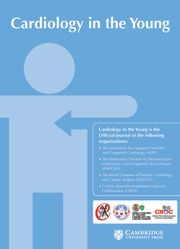Article contents
Virtual cardiac models as a teaching tool for cardiac morphology
Published online by Cambridge University Press: 20 March 2025
Abstract
Understanding complex three-dimensional cardiac structures is the key to knowing CHD. Many learners have limited access to cadaveric specimens, and most alternative teaching modalities are two-dimensional. Therefore, we have developed virtual cardiac models using photogrammetry of actual heart specimens to address this educational need.
A descriptive study was conducted at a single institution during a week-long cardiac morphology conference in October 2022 and 2023. Conference attendees viewed virtual cardiac models via laptop screen and virtual reality headset. Learners were surveyed on their opinions of the virtual models and their perceived effectiveness compared to existing educational materials.
Forty-six learners completed the survey. Participants reported the virtual cardiac models to be more effective than textbook diagrams (60%), and equally or more effective compared to didactic teaching (78%) and specimen videos (78%). Approximately half of participants (54%) found the virtual models to be less effective than hands-on cadaveric specimen inspection. Attitudes towards the virtual specimens were overall positive with most responders finding the tool engaging (87%) and enjoyable (85%). A majority reported that the models deepened their understanding of cardiac morphology (79%) and that they would recommend them to other trainees (87%).
This study demonstrates that a novel teaching tool, virtual cardiac specimens, is equivalent to or more effective than many current materials for learning cardiac morphology. While they may not replace direct cadaveric specimen review, virtual models are an engaging alternative with the ability to reach a wider audience.
Information
- Type
- Original Article
- Information
- Copyright
- © The Author(s), 2025. Published by Cambridge University Press
References
- 1
- Cited by


